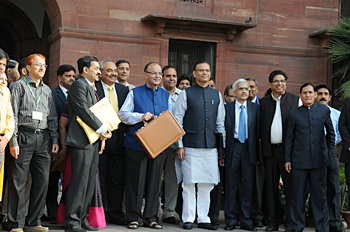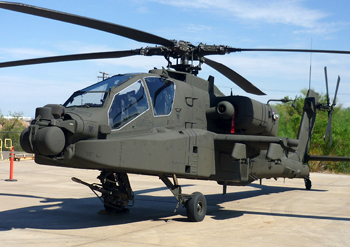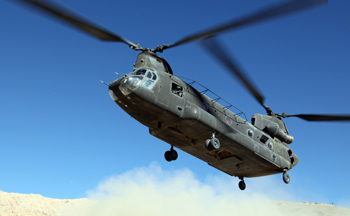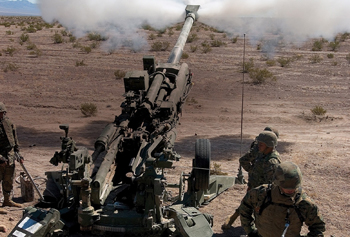INDIAN ARMED FORCES CHIEFS ON OUR RELENTLESS AND FOCUSED PUBLISHING EFFORTS

The insightful articles, inspiring narrations and analytical perspectives presented by the Editorial Team, establish an alluring connect with the reader. My compliments and best wishes to SP Guide Publications.

"Over the past 60 years, the growth of SP Guide Publications has mirrored the rising stature of Indian Navy. Its well-researched and informative magazines on Defence and Aerospace sector have served to shape an educated opinion of our military personnel, policy makers and the public alike. I wish SP's Publication team continued success, fair winds and following seas in all future endeavour!"

Since, its inception in 1964, SP Guide Publications has consistently demonstrated commitment to high-quality journalism in the aerospace and defence sectors, earning a well-deserved reputation as Asia's largest media house in this domain. I wish SP Guide Publications continued success in its pursuit of excellence.
- A leap in Indian aviation: Prime Minister Modi inaugurates Safran's Global MRO Hub in Hyderabad, Calls It a Milestone
- All about HAMMER Smart Precision Guided Weapon in India — “BEL-Safran Collaboration”
- India, Germany deepen defence ties as High Defence Committee charts ambitious plan
- True strategic autonomy will come only when our code is as indigenous as our hardware: Rajnath Singh
- EXCLUSIVE: Manish Kumar Jha speaks with Air Marshal Ashutosh Dixit, Chief of Integrated Defence Staff (CISC) at Headquarters, Integrated Defence Staff (IDS)
- Experts Speak: G20 Summit: A Sign of Global Fracture
Defence Budget 2015-2016
 |
By Lt. General P.C. Katoch (Retd) Former Director General of Information Systems, Indian Army |
The Fiinance Minister has announced a defence budget of 2,46,727 crores for FY 2015-16. This announcement has come in the backdrop of a few other defence related news items:
- During Aero India 2015 Defence Minister Mohan Parrikar admitted that the defence procurement policy needed to be streamlined in order to facilitate Make in India in defence sector. Why this glitch still remains despite the Prime Minister’s call for Make in India on 15 August 2014 raises questions especially when global arms majors are so very keen to respond to the PM’s call.
- The Defence Minister recently informed the Parliament that the Army, Navy and Air Force have placed orders 83,858 crores during fiscals 2011 to 2014 for procuring arms, weapons and other defence-related systems (IAF - 55,406 crores, Navy - 25,454 crores and Army - 2,998 crores through foreign firms). But then these are statistics that are hardly reassuring considering the state of modernization of our Armed Forces and the defence-industrial complex.
- Defence minister also said 144 companies have been issued licenses and letters of intent for manufacture of military hardware in the last 14 years, and 29 joint ventures and FDI proposals have been approved. Again hardly reassuring considering the state of modernization of our Armed Forces and the defence-industrial complex.
- Government has approved 8,300 crores for OROP in the FY 2014-2015 defence budget and the scheme is reportedly under implementation. This will fulfill a long standing promise and would help reduce or negate surrender of funds in the current fiscal, which as per inside sources in end 2014 was estimated at about 12,000 crores.
 The Union Minister for Finance, Corporate Affairs and Information & Broadcasting, Shri Arun Jaitley departs from North Block to Parliament House along with the Minister of State for Finance, Shri Jayant Sinha to present the General Budget 2015-16, in New Delhi on February 28, 2015.
The Union Minister for Finance, Corporate Affairs and Information & Broadcasting, Shri Arun Jaitley departs from North Block to Parliament House along with the Minister of State for Finance, Shri Jayant Sinha to present the General Budget 2015-16, in New Delhi on February 28, 2015. Apache
Apache CH-47 Chinook
CH-47 Chinook M777 Lightweight Howitzer
M777 Lightweight HowitzerComing to the announcement of the defence budget of 2,46,727 crores (US$ 40 billion) for FY 2015-16 against Revised Estimates of 2,22,370 crores for the year 2014-15, the increase is 24357 Crore or 10.9% from the Revised Estimates and 17727 Crore or 7.74% from the Budget Estimate of 229,000 Crore announced in July 2014 by the same Finance Minister. Unfortunately, the announcement of 2,46,727 crores as defence budget for FY 2015-2016 will not amount to much considering the fall in the value of the rupee against the US dollar vis-à-vis continuous rise in prices of arms and weapon systems that are imported. Yes Make in India will eventually catch up but the long gestation period cannot be ignored and in the interim and the pathetic state of Armed Forces modernization too cannot be ignored in the face of mounting threats to national security. When General Charles de Gaulle became President of France in 1959, France was militarily not very strong. Though France was member of NATO, the Commander in Chief of the NATO forces was even prohibited from revealing to national authorities like the French President, which bases in their own countries housed the Alliance’s nuclear weapons. What de Gaulle ensured was that the Defence Budget of France was to ensure defence allocations remained greater than 2 percent and touching 5% of the GDP, resulting in France emerging as a militarily strong nuclear power. That trend has continued with current French military expenditure standing at 5.4% of the GDP. In India, though the Long Term Integrated Procurement Plan (LTIPP) is based on a hypothetical 3% of GDP, defence allocations have never really touched that mark. Even post the Kargil Conflict and public exposure to massive equipment shortages in the Army, the one time high 1999-2000 Defence Budget allocation was made at 2.41% of the GDP. However, there has been a downslide since then, not to talk of the thousands of crores of Rupees that were surrendered by MoD annually barring an odd year when budgetary allocations were fully utilized.
The close interrelation between economy and security of any country is an accepted fact. Both need to be fine-tuned. The rising threats particularly from China and Pakistan too need to be taken into account. We need to take a cue from the record US$ 42 billion of Japan in face of Chinese aggressive posture that we too face. Logically India should have a defence budget of 3% or more of the GDP for next few years. Sure, India can become a global manufacturing hub for arms and defence equipment but as mentioned above what of the interim period. The bottom line is that an allocation of 2,46,727 crores for FY 2015-16 is disappointing and does not augur well for the government’s commitment to defence modernisation. The ‘India First’ commitment of the present government is unquestionable but how is the Defence Budget allocated and how is the long term integrated procurement plan (LTIPP) chalked out in absence of a National Security Strategy, without defining National Security Objectives and without a Comprehensive Defence Review? This vital anomaly in India’s defence setup cannot be resolved unless the higher defence structures of India are remodeled and military professional brought into the MoD and the defence industrial complex. Unfortunately, the government has made no move in this direction yet.





